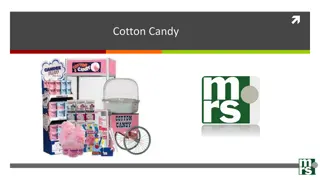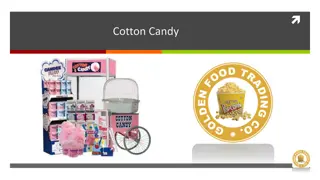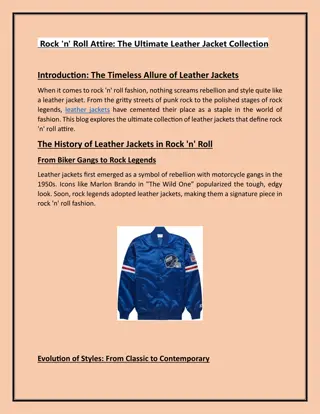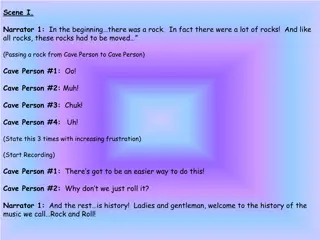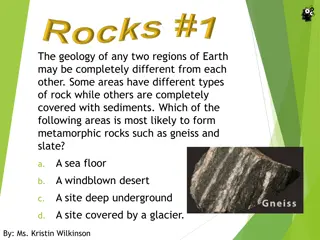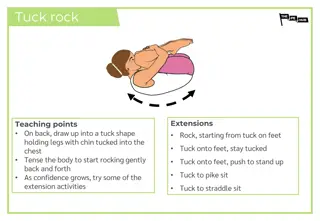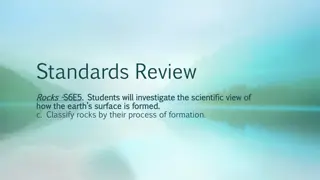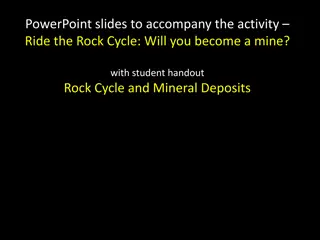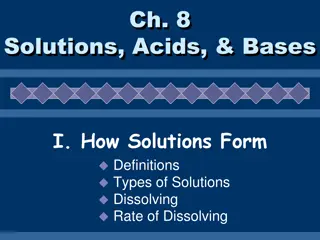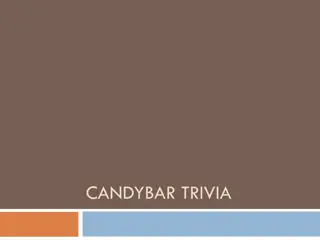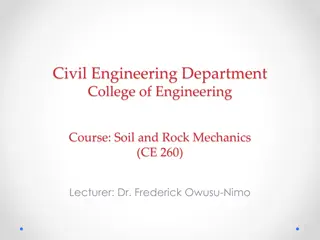Experimenting with Supersaturated Solutions: Rock Candy Creation
Exploring the phenomenon of supersaturated solutions through an experiment creating rock candy. The solubility of sucrose in water is observed at different temperatures, showcasing how more sugar can dissolve in a hot solution than in a cold one. The process of supersaturation and crystallization is detailed, highlighting the changes in solubility as temperature varies.
Download Presentation

Please find below an Image/Link to download the presentation.
The content on the website is provided AS IS for your information and personal use only. It may not be sold, licensed, or shared on other websites without obtaining consent from the author. Download presentation by click this link. If you encounter any issues during the download, it is possible that the publisher has removed the file from their server.
E N D
Presentation Transcript
ROCK CANDY AKA the solubility of sucrose in water depends upon the temperature. Supersaturated solutions explained.
We have seen on table G that 120 grams of KNO3 fit into 100 mL of solution at 65 C (the red arrow). If the solution cools to just 10 C, this same solution can only keep about 23 grams dissolved (at the blue arrow). The difference is what falls out of solution. 120 g 23 g = 97 grams of precipitated KNO3 at the bottom of the beaker. This solution cannot keep all of this KNO3 dissolved when cold. It can t supersaturate.
Strangely, sugar can supersaturate. You can start with a very concentrated HOT solution, and cool it slowly, the extra sugar that should not be able to fit into the cold solution stays dissolved. It sort of tricks the water. Sodium acetate can also do this (the reusable hand warmer salt). If you make a super saturated solution of sugar, you can let it slowly (about 6-7 days) crystalize onto a string, or a stick, to make rock candy. Rock candy is just crystalized sugar, that you can eat. It s pretty and it s very sweet.
I started out with 50 mL of water, room temperature about 22 C I started adding sugar cubes etc.
I had no plan as to how much sugar might fit, but as it turns out, I added 51.66 grams in total! More sugar made the volume increase too. The solution thickened up (it became more viscous).
As I heated it up, more sugar fit, and the solution clouded up some. The volume rose to more than 100 mL.
The cold water held 51.66 grams of sugar when a few crystals sat at the bottom. Heated up to 93 C, I was able to add 64.55 MORE grams of sugar. A total of 116.51 grams into 50 mL of water. The volume increased to more than 100 mL at this time. At 93 C it held much more sugar (51.66 g + 64.55 g = 116.51 g !!)
I stuck some string tied to a pencil into the hot sugar water. I put the beaker away for safekeeping. I will photograph it over the next few days to see what happens (fingers crossed). It cleared up a lot in 10 minutes
What was supposed to happen was my sugar crystals were going to form ON the string, which would encourage more sugar to crystalize out of solution, ONTO the crystals on the string, and in a few days - they d look like this Who ever did this internet rock candy picture used some red food dye to make the candy pink, but it s the same idea.
One day in, not much to see. The solution is clearing up. The only way to get this much sugar into that water was to heat it up quite a bit (over 90 C) As the solution cooled down, you might think that the excess sugar would drop out, like MOST compounds would. 50 mL of water can only hold so much solute based upon temperature. This solution tricks the water into staying over-full as it cools down. This is called being: SUPER-SATURATED. This solution is holding more solute that should fit into this much water. It works because we started out HOT, and then cooled it down slowly.
Making Rock Candy is harder than it looks, and this didnt work well for me. I think my beaker was not clean to start, so the crystals formed (but not on the string). They formed well on the bottom and the top of the beaker. I ended up with a solid top, and a solid bottom! I will try again with this recipe, you should too. Bob makes science fun! (it s really a good recipe) https://sciencebob.com/make-your-own-rock-candy/ You should try this, possibly using a popsicle stick, or wood skewer instead, and IMPORTANTLY, seed the wet stick with crystal sugar and let the crystals dry before putting it back into the supersaturated solution.








